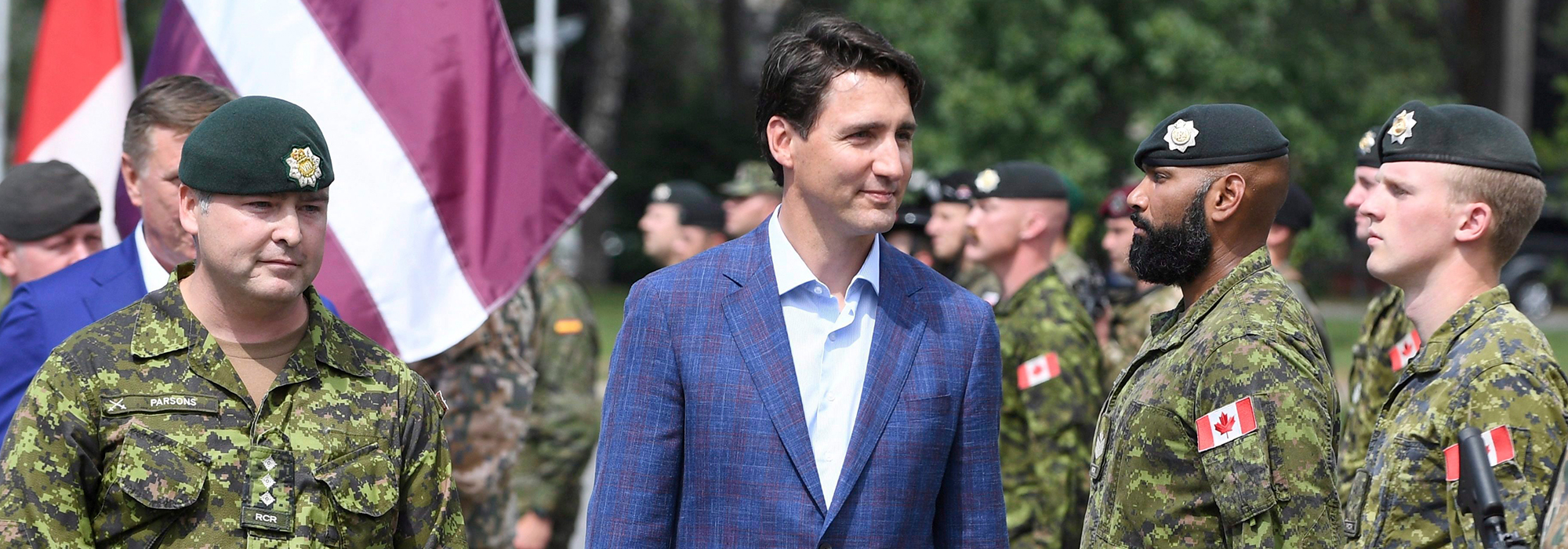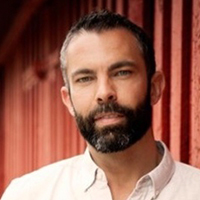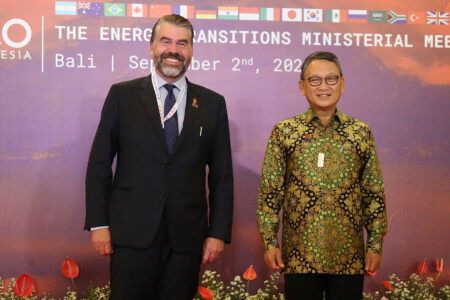
Security assistance — helping other countries’ armed forces and other security services — has become a major security policy tool for Canada. We count seven current Canadian operations abroad with a military training component, most notably in Iraq, Ukraine and Latvia. Canada is a fairly important player in Latvia; it heads up the NATO mission there. And in November, Brigadier General Jennie Carignan took command of the NATO Training Mission in Iraq.
Canada’s efforts are of a piece with those of its allies. For many Western states, training looks like a way to bolster a distant nation’s defence capacity at a much lower cost than they would incur for major deployments of their own military. American training, naturally, dwarfs Canada’s. According to a new data set we have compiled, in 2016, some 155 countries around the world had at least some of their military personnel receive US training, amounting to 177,161 trainees, at a cost to the United States of US$1.1 billion.
It’s clear that Western states like training, but it’s less clear whether it works or even what it is for. Security assistance has a checkered history; research points to US efforts in Greece after the Second World War as a rare success story. More recently, there have been spectacular failures, above all the crumbling of the Iraqi security forces in the face of ISIS in Mosul in 2014, the 2012 coup in Mali led by a US-trained officer and repeated failures to build a capable army in Somalia. There are recipient armies with long-running problems, whether the steady stream of desertion in Afghanistan or human rights abuses in Colombia. These problems are now in the spotlight after the mass shooting in Pensacola, Florida, by a US trainee from Saudi Arabia. Some research suggests that security assistance may in fact contribute to such problems, though other work suggests that certain training programs do help instill democratic norms in recipient armies.
Does training work? Why does it often seem to fail? An answer has to begin with defining success. Training has different goals, both military and diplomatic. This complicates the criteria governments and policy analysts use to evaluate a mission.
Does training work? Why does it often seem to fail? An answer has to begin with defining success. Training has lots of different goals, both military and diplomatic. This multiplicity of purposes complicates the criteria that governments and policy analysts would use to evaluate a mission and may itself make it hard for a mission to succeed. What’s more, it is not always clear that the training provider has much stake in “success” at all.
This is one of the key lessons we learned at a recent workshop at the Université de Montréal on training and security assistance, hosted by the Centre d’études sur la paix et la sécurité internationale and funded by the Canada Research Chair on the Politics of Violence and the Department of National Defence. We gathered 16 academics doing leading research on this subject, as well as policy-makers, military officers and experts wearing multiple hats. In various ways, it became clear that policy analysis on training and security assistance needs to ask just what training states are looking to accomplish.
The usual, and powerful, answer for why these operations often fail is that leaders in the recipient country do not want them to succeed. Whereas the United States or another trainer might care most about building an effective and legitimate armed force, local leaders also care about political survival. An effective armed force promotes on merit, not political connections; spends money wisely, rather than paying off cronies; doesn’t fire on unarmed protesters; and gives a politically worrisome autonomy to low-level commanders. All this is risky for a fragile leader in a weakly institutionalized state like Iraq or Afghanistan. The leaders with whom outsiders partner in weak states will often delay, obstruct and hinder the key organizational reforms that could improve military effectiveness, even as they gladly accept cash and weapons. The solution, according to the traditional approach, is for the training provider to use its leverage to place strict conditions on receiving assistance. Training states go wrong, from this point of view, when they do not use this leverage — that is, when they stay the course rather than credibly threaten to cut their losses and get out if local partners do not reform their practices.
Thus the typical analysis emphasizes a well-meaning security assistance provider, overcommitted to helping out and undone by wily locals. This explanation for the difficulties of training has a lot going for it and does a good job explaining the basic problem in many settings. In particular, it accurately characterizes the behaviour of recipient country leaders, notably former Iraqi Prime Minister Nouri al-Maliki’s incentives leading up to the collapse of Iraq’s army ahead of the advancing ISIS forces in the fall of Mosul in 2014.
But it’s problematic to assume, looking at the other side of the relationship, that the governments providing the training are really committed to military effectiveness and to inducing trainees to uphold human rights and democratic norms. First, security assistance is attractive to a large degree because it does not commit the outside provider to very much. Indeed, in critical, prominent cases, it represents a reduction in the patron’s burden. Richard Nixon turned over responsibility for the Vietnam War to the South Vietnamese in order to extricate the United States, without much confidence that Saigon could win. Training in order to build up the recipient army enough to paper over an embarrassing exit is not a recipe for success. Similar criticisms could be levelled at the US and its coalition partners in Iraq and Afghanistan: Maliki and former Afghan President Hamid Karzai may not have wanted to pay the costs of standing up effective armies, but the United States (to say nothing of Canada) has been leery of the cost as well. For the Western armies implementing training missions, professional incentives often lean toward ticking boxes and meeting targets set in Washington, rather than bringing about durable change.
Still more perversely, it’s not clear that it’s actually a good thing for the training provider to use the leverage it gets from providing funds and expertise. Sometimes that leverage is used to fight corruption. But sometimes, as we’ve learned from the Ukraine file in the United States, it is used to cajole a client state to announce investigations of a patron’s political adversaries. While Congress was willing to insist on reinstating the military aid package to Ukraine, it does not appear ready to insist that President Trump pay a political price for this kind of malfeasance. We can therefore expect it to recur. And look for security assistance to be a particularly attractive tool: American assistance is ubiquitous and, for many clients, vital.
There is another ulterior motive for training for countries like Canada, Britain and the Netherlands, as our workshop also emphasized. This one is much milder but still important: training offers a great example of military public diplomacy. Training is an active policy that addresses pressing security challenges, without the high risks and costs of robust, active combat deployments. It can feed into positive narratives of Canada’s role in the world and avoids many of the criticisms attendant on peacekeeping. And, of course, Canada very rarely does any security assistance outside of a multilateral context. Nearly every overseas training mission it embarks upon is a way of contributing to a larger effort, whether in an ad hoc coalition, NATO or a UN framework. But the risk is that, whether for a domestic or an international audience, being seen to be doing something — especially by powerful allies — becomes the key policy objective. Whether training programs actually overcome the real problems of mutual incomprehension and poor political incentives could be less important than appearances. Gender-related training is a classic example; it carries a clear risk of putting up a good appearance without meaningful successes.
The multilateral framework also provides a concern for Canada: not only its own policy objectives but those of its key allies can make a big difference, especially given the “great asymmetry” between the US and its allies. This country and its forces can help in a country like Ukraine, contributing in modest but meaningful ways to combating separatist insurgents and deterring Russia. But if American policy toward that country is beholden to the domestic political imperatives of a feckless president, Canada’s efforts may not make much of a difference at all.
There are capable policy professionals in Canada and elsewhere who are aware of these challenges, as well as of the operational difficulties of putting together a good training program that fits well with trainees’ background, experience and interests. But if the training state’s goals are not clear, or worse, then much of the effort that goes into such a program may be wasted.
Photo: Prime Minister Justin Trudeau inspects the troops as he visits Adazi Military Base in Kadaga, Latvia, on July 10, 2018. (AP Photo/Roman Koksarov)
Do you have something to say about the article you just read? Be part of the Policy Options discussion, and send in your own submission. Here is a link on how to do it. | Souhaitez-vous réagir à cet article ? Joignez-vous aux débats d’Options politiques et soumettez-nous votre texte en suivant ces directives.










